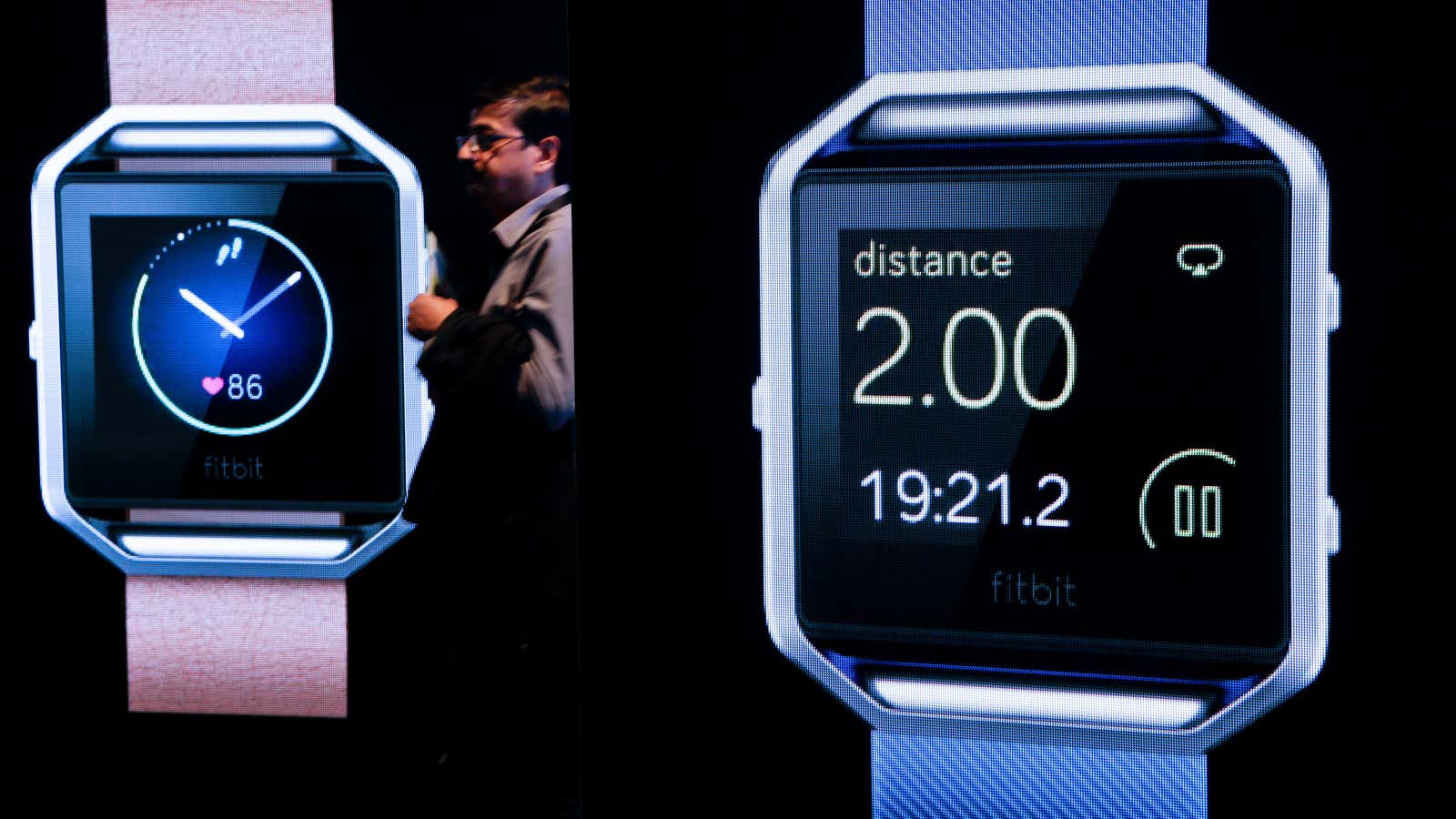Fitbit can’t catch a break.
The internet-connected wearables company just announced its earnings for the first quarter of the year, and they were pretty solid across the board. But next quarter Fitbit is expecting lower sales and, in particular, profit than Wall Street analysts wanted to see, according to Seeking Alpha. Fitbit’s stock has tumbled more than 11% in after-hours trading at the time of publishing.
But for a company now directly competing with Apple in the smartwatch category, Fitbit had a decent post-Christmas quarter. It sold nearly 5 million wearables—roughly 1 million more than in the same quarter last year—and had over $505 million in sales, up about 50%. On top of that, the company said that 47% of the products it sold in the quarter were its newest products—the thin Fitbit Alta step-tracker, and Fitbit Blaze, its first smartwatch.
Fitbit did, however, say that sales next quarter won’t be much higher than this quarter—between $565 and $585 million—and revenue for the year will be between $2.5 billion and $2.6 billion. These aren’t way off what analysts were expecting, according to Seeking Alpha, but the company’s guidance on earnings-per-share for next quarter was far below what they expected, and this is what’s sending the stock into a tailspin.
At one level, Wall Street’s bearishness is surprising. Unlike other internet-connected device companies that only sell one type of thing—GoPro immediately springs to mind—Fitbit’s business doesn’t seem to be based on a fad. People are still buying its gadgets, and it is apparently stocking up ahead of Mother’s and Father’s Days in the US, according to MarketWatch. In a release shared with Quartz, Fitbit said its average sale price—how much it sells a product for to a given customer—has risen from $85 in the same quarter last year to $100.
Moreover, while many feared Fitbit would be wiped out when the Apple Watch launched last year, that hasn’t happened, and Fitbit seems, at least, to be working hard to ensure that it doesn’t. This time last year it had 295 people working in R&D; it now has 755.
So why is Wall Street unconvinced? The markets probably fear Fitbit, like so many other device makers, will prove to be a short-lived fad that falls prey to new technological developments.
GoPro’s sales hinged on the fact that not many people had rugged, small, portable cameras—until, as The Wall Street Journal (paywall) argued recently, the smartphone ate its business. Something similar could happen to Fitbit as the Apple Watch improves. Apple is pitching the Watch, and its mobile devices more generally, as health-monitoring services, an area which Fitbit sees itself (paywall) as being the market leader. And if you have a reliable health tracker that also takes your calls, delivers your email, connects to your laptop and phone, and is part of the same Apple ecosystem, why would you opt for a third-party device?
Correction: An earlier version of this post stated that Fitbit was expecting lower sales for the entire year, not just next quarter. It also stated that Fitbit’s stock dropped $15 in after-market trading, when in fact it dropped about $3.
